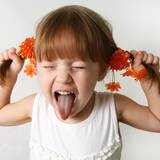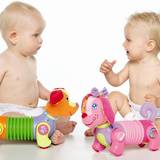Shop
02683
https://www.under5s.co.nz/shop/Hot+Topics+Articles/Child+Development/Music+movement+and+nutrition.+What+is+the+link.html
Music, movement and nutrition. What is the link?
|
The link between music, movement and nutrition has been shown to impact children’s brain health and functioning. Dr Tessa Grigg explores this link and how these simple things can help to nurture your baby’s or child’s brain.
|
You might also be interested in ...
Understanding disruptive behaviour
What constitutes ‘disruptive’ behaviour in young kids is very subjective. However, by looking deeper at your child’s behaviour it will help you understand more about why they act in a certain way. Behaviour that can appear ‘naughty’ or ‘disruptive’ to you, is often just your child’s way of communicating an unmet need as they try to figure out their way in the world.
The plus side of play dates
Are play dates really necessary when kids are young? We take a look at some of the benefits and developmental effects play dates can have on older babies, toddlers and pre-school kids when they catch up with their friends.
join usJoin us on social media for all our latest news. |
sign upSign up and receive our latest newsletters. |
|







Dr Tessa Grigg explores this link and how these simple things can help to nurture your baby’s or child’s brain.
Music, movement and nutrition. What is the link?
Parents are often interested in their children's brain health and the ability of the brain to adapt and heal, particularly where there are movement and learning challenges.
Over my 30+ years of experience in this field, I have encountered many children, and the children who progress well, have contact with professionals who believe that the brain can be nurtured and can therefore change.
Is this Nature vs Nurture? I don’t believe so. I see it as nature supported by nurture. So the question is: what can be done to nurture a baby’s brain?
Movement
Every movement a baby makes is part of a process that wires their brain.
Initially, a baby's movements are reflex-based. Their arms, legs and head move in patterns associated with the primitive reflexes. As time passes, their brain starts to take over the movement of their arms and legs. A baby finds its hands and explores the fingers. This is a sign that the brain is driving the movement.
Norman Doidge(1) describes the brain as being a bit like a slope of fresh snow. A skier can choose the path down the slope. It was enjoyable, so they do it again, and a path is made, but ruts develop because snow is very ‘plastic’ and pliable. It becomes hard to stray from the initial path that produced that feel-good factor.
This metaphor illustrates the process of brain plasticity. Circuits in the brain get very good at what they do through practice and repetition, and they tend to develop a monopoly for that task, not allowing other parts of the brain to take over, even if they could.
The important fact here is that if we repeat movements then we will strengthen muscles as well as the brain.
Movement is good for the brain and it is a lifelong journey.
Music
The title of the includes music and nutrition, as well as movement. The reason is that the combination of these three aspects has been shown to impact a child's brain health and functioning.
When they move, they are potentially protecting the brain from neurological diseases, so the patterns we set with young children will have an impact as they age.
(2) Engagement in music has been shown to have positive effects on a variety of areas of the brain, which in turn impacts memory, attention, and motor functioning (movement ability).
When children move to music, they give the brain a great workout, and this activity nurtures the brain.
The key to music and the brain is the importance of engagement. Listening to music is fine, but if you want to nurture the brain, there needs to be activity associated with the music.(2)
It may be dancing, playing percussion or for older children playing a tuned instrument. The greatest benefit comes from the movement related to the music.
Nutrition
Finally, but definitely not least important, is nutrition. Julia Rucklidge has studied the importance of micronutrients in the brain (3) with particular reference to anxiety, depression, ADHD and stress.
When a brain has the right mix of nutrients, it is clear that it functions more efficiently and effectively. So for typically developing children, focusing on eating food that is whole and as close to the source as possible is a great start.
Encourage your children to eat a rainbow of foods every day so that the nutrients are mixed up. Avoid highly processed foods, in particular, snacks.
Often older children like to graze or fuel-up constantly. A lunch box they have access to, filled with healthy snacks can help these children. For mothers feeding babies, applying these suggestions to what you eat, will also have an impact on the brain of your baby.
So the message is simple, move, dance and eat well. These simple things will nurture the brain of your baby or child.
Source: This article was kindly written for us by Dr Tessa Grigg.
Image source: Unsplash
References:
1. Doidge, N., Hypnosis, neuroplasticity, and the plastic paradox. American Journal of Clinical Hypnosis, 2015. 57(3): p. 349-354.
2. Misuraca, R., S. Miceli, and U. Teuscher, Three effective ways to nurture our brain: Physical activity, healthy nutrition, and music: A review. European Psychologist, 2017. 22(2): p. 101–120.
3. Rucklidge, J.J. and B. Kaplan, The better brain. 2021, London: Vermillion. 354.